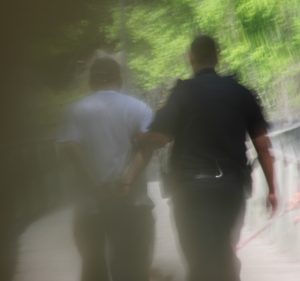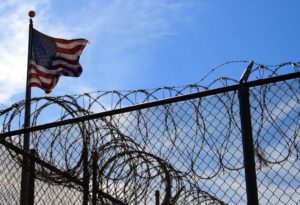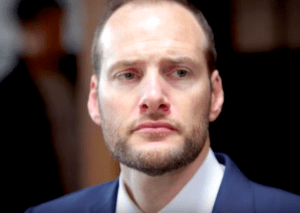America’s Criminal Injustice System
In this age of stop-and-frisk, racial profiling, mandatory sentencing, the death penalty, life without parole and execution-by-cop, I—a private eye for defense lawyers—can't defend anybody. D.C.Atty / CC-BY-2.0
1
2
3
D.C.Atty / CC-BY-2.0
1
2
3
Sotomayor’s dissent describes daily existence for my defendants. Too poor to buy car insurance, fix broken tail lights, pay parking tickets, or get green cards, they are always on high alert for the police. (Alice Goffman’s brilliant study, On the Run: Fugitive Life in an American City, describes just how it works in one of Philadelphia’s poorest neighborhoods). My defendants have been sentenced to life in a war zone even before they find themselves charged in court. They have been sentenced to a life without parole or sometimes to death, caught as they are in a crossfire between cops and warring neighborhood gangstas.
A warrant for, say, unpaid parking tickets discovered in a Strieff-approved stop gets you a search of yourself and your car by police and maybe a bust for weed, the intoxicant of choice for many of the poor. If you object or run or the arresting officer is having a bad day, it may get you dead. (Refusing to pay protection money to your neighborhood punks or standing on the wrong corner at the wrong time may do the same.)
Once you’re arrested, if you say you want a lawyer, you get a public defender with so many cases she or he may not even be able to meet you or read the complaint against you before you appear in court. You may serve weeks or months in jail, even if you’re innocent, before your case is heard, and years before you are tried.
A district attorney (DA) has a whole police department to use to investigate a crime (although the Oakland Police Department, which I’m often up against, solves only 27% of its murder cases, and so is not exactly the most formidable of foes). A recent investigation by the East Bay Express reveals that many Oakland cops are too busy hooking up with underage prostitutes on Facebook and screwing them in police cars to solve murders. But if a DA needs to find a witness, the OPD’s army of street cops can often locate him through their CIs (confidential informants), or they can pull him in on a warrant for those unpaid parking tickets, threaten a drug bust or revocation of his parole or probation, or hold him as a material witness if he resists cooperating.
At best, a defendant gets just me — and most of the accused don’t get an investigator at all. The landmark 1963 Supreme Court case Gideon v. Wainwright may have given poor defendants the right to an attorney, but there is no legal right to an investigator (except in death penalty cases). And unlike a DA, no one has to talk to me or face trouble with the law. I have no muscle. But I have been known to find a witness who doesn’t want to be found and nag him or her into submission.
In the last 10 years, in cases mostly in Northern California, among scores of people I’ve helped defend, only three have been white — and they were as destitute as the poor blacks and Latinos who jam American jails and prisons.
Defense teams I’ve been on start off by guessing if and why the accused might have done what he’s charged with. It’s human nature to do so. But if the accused is pleading not guilty, it’s better not to know.
“I don’t know what happened, I wasn’t there,” one death penalty lawyer I work with regularly says to shut off such speculation. As for the why, the shrinks often can’t help, even if you call on them to testify. Decades of research into the criminal mind often comes down to: “he snapped.” That’s not a good line for a jury, but it’s the kicker to many a defense meeting.
“It Ain’t Just, But That’s How They Do”
In a real trial, the truth of what actually happened doesn’t matter anyway. Only the truth of the evidence counts.
Are poverty, racism, and a desperate childhood a defense? Prosecutors love to face this argument. They get on their high horses and trot out the American dream and all the poor people who suck up their rage and despair and don’t murder someone.
All the folks who don’t snap.
But in California, what might have caused someone to snap isn’t admissible at trial anyway, except in death penalty cases. A “diminished capacity” defense was abolished in 1981 after ex-San Francisco Supervisor Dan White used one to beat a murder rap for killing Supervisor Harvey Milk and Mayor George Moscone. The jury bought his lawyer’s argument — which came to be known as the “Twinkie defense” — that White was addled by junk food when he killed the two of them. It ignored evidence that White intended and planned the murder, taking his gun to City Hall, climbing through a window to avoid metal detectors, and reloading it after first shooting Moscone.
These days, only in the penalty phase of a death penalty case — when the jury decides whether the defendant they’ve just found guilty will face capital punishment or life in prison without parole — can defense lawyers present evidence of the tragic facts of the defendant’s life. The jury may then hear of his years in foster care, his Mom the crack addict, his Dad absent in prison, and the older brother who initiated him into street life. Only then will the jury be asked to see the accused as a person with a life beyond the crime with which he is charged. The defense will finally replace a prosecutor’s blown-up mug shot of the defendant and Facebook screen shots of him showing off a gun with family photos of him at his sixth birthday party decked out in a silly hat and others of his toddler and baby mama.
Most jurors don’t much like this defense. They assume it’s just an excuse. But it’s not. It’s an explanation.
Take Larry. He’s an OG (original gangsta, or old guy), a 50-year-old African-American man who grew up in dire poverty in Deep East, Oakland’s most murderous neighborhood. Larry has symptoms of schizophrenia but has never been able to get real mental health care. He’s been living, on and off, with his mother who is also schizophrenic in Acorn (“The ‘Corn”), one of the toughest housing projects in West Oakland. His mother is too afraid of its gangbangers to leave her apartment. Larry recently told a counselor at a walk-in clinic for the poor that he thought he had PTSD from all the shooting and killing he’s witnessed.
Like many poor Oaklanders, he makes his meager living in the underground economy, dealing small amounts of weed to regular customers who phone him on his cell. While cell phones have made it possible to sell drugs without the turf battles of the past, The ‘Corn is ruled by a gang of young punks called The Acorn Mob and their rivals, The Gashouse Team. The Mob doesn’t just support itself moving guns or drugs. It also makes money ripping off small-time dealers like Larry, demanding protection money from neighborhood people, and robbing the elderly when they cash their social security checks.
Like many poor people living on such mean streets, Larry is always looking over his shoulder. A simple walk down the block might mean being rolled by The Mob, accosted by police, or caught in the crossfire of someone else’s feud.
In early 2012, Larry’s life dropped off a cliff. His brother died of cancer; his daughter died in a freak case of emergency room malpractice; he witnessed a friend gunned down in a gang battle; and he was robbed at gunpoint on a street near The ‘Corn. Meanwhile, the Acorn Mob was stepping up pressure on OGs like Larry to pay them protection money.
Your support matters…Independent journalism is under threat and overshadowed by heavily funded mainstream media.
You can help level the playing field. Become a member.
Your tax-deductible contribution keeps us digging beneath the headlines to give you thought-provoking, investigative reporting and analysis that unearths what's really happening- without compromise.
Give today to support our courageous, independent journalists.






You need to be a supporter to comment.
There are currently no responses to this article.
Be the first to respond.